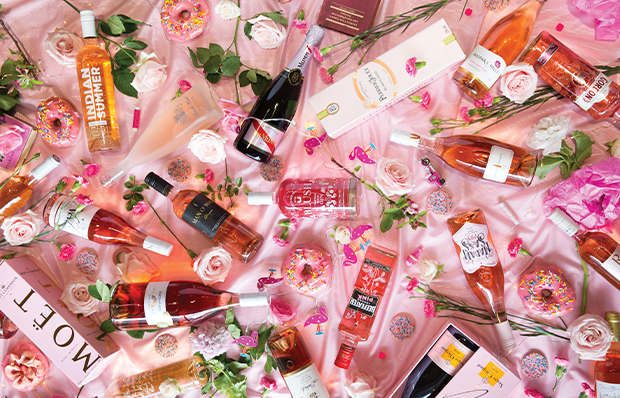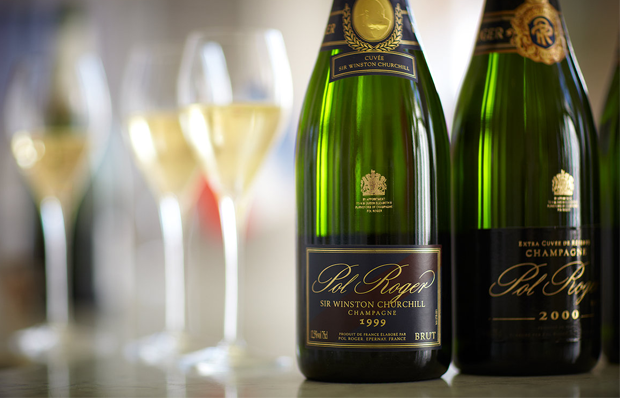One look at the back page of our Wineletter this December and it is clear that ‘it’s all about pink’ this summer, rosé wine, rosé Champagne and pink gin.
So, what is pink gin? Does rosé have to be pale to be good? And why is rosé champagne more expensive? These and many more questions answered here.
Let’s start with rosé and how it is made, as the production method has a lot to do with the resulting colour. There are three main ways to produce rosé wines; through skin contact, the saignée method and blending.
The first is most commonly used when the aim from the start to the finish is to make rosé. Red skinned grapes are picked, then crushed and the skin and the juice are left together for a short period of time. After this the skins are pressed and then discarded prior to the fermentation. In red wine production, the skins would remain with the juice until after fermentation. The resulting colour of the rosé depends on how long the skins and juice have been in contact for. This method of producing rosé usually results in wines with tannin and a reasonable amount of colour.
The second method, saignée (meaning ‘bleeding’ in French), is a technique whereby rosé is made as a secondary product to red wine production. This method of production involves removing some of the pink juices from the initial crushing of the red grapes. This juice is then fermented and a rosé produced. By doing this the red wine being produced has more tannin and colour. This style of production results in very light, fruity rosé.
The third method, blending. This is where red and white wines are blended to produce a rosé wine. This method is not as common as the first two and is in fact banned in Europe, except in Champagne, where some rosé Champagne is made this way, predominantly with chardonnay and a little pinot noir added.

So, what makes a great rosé and what should you be looking for? One thing is for sure, a pale colour in isolation does not determine whether a rosé is brilliant or not. Here are some more facts to take into consideration;
Côtes de Provence Rosé. It’s a very large area and not all are excellent in quality, so be very wary of cheap Côtes de Provence wines. Côtes de Provence does produce some of the most exceptional rosés in the world, the very best have a gorgeous fragrance, a delicate hue and wonderful texture.
Rosé made because it was intended to be rosé. The very best rosé wines are those made, year in year out, from grapes intended for rosé, and not from grapes that did not make the red wine cut. Grapes selected with care. Rosé sales are booming, and it is no surprise that there are a very large number of rosés being made in New Zealand and imported into New Zealand. To ensure that we carry only the best, what we did this year (as we do regularly) was taste all the potential rosés that we could stock and have selected our range very carefully. The range in a Glengarry store is one you can have a high level of confidence in.
My favourite rosés this summer? Château Léoube Rosé and Secret de Léoube are two of my favourites. Château Riotor is a winery and rosé I have been a fan of for years. And on the New Zealand front, Waipara Hills Waipara Rosé 2018 stands, I believe, head and shoulders above many that sit at far higher prices.
Rosé Champagnes are generally slightly fuller bodied, and often drier, than normal champagnes, which makes them an excellent wine for matching with food. Most Champagne houses nowadays will do two or three rosés: a non-vintage, a vintage, and maybe even a prestige cuvee.
As with normal Champagne, the non-vintage represents the ‘house style’, and will usually offer good, if straightforward, drinking and a promise of what is to come with the top wines. Of the non-vintages, I’ve always been a fan of Billecart Salmon Brut Rosé. It always makes the list as one of the ‘best rosés’ and will appear somewhere near the top, and with good reason – it is a lovely, dry style, with copious amounts of strawberry and raspberry, an intriguing minerality, and a beautiful velvety texture. I recently tasted Perrier-Jouët Blasson Rosé and would have to say I was super impressed. A rich, complex rosé with a wonderful hit of dosage that lends this wine nicely to be a perfect aperitif style rosé Champagne.
Pink gin. Apart from the blindingly obvious, that it’s pink, what makes pink gin so cool? There’s various pink botanicals and berries that have been added to gins to make the colour different. Adding these of course makes the taste of the gin different too. Whilst not all are sweet, the Gordon’s pink gin gushes with berries that do give it a sweeter profile, making it sensational with half lemonade and half prosecco in a large glass with ice. Beefeater is full of strawberries. For me, it’s a bit drier and perfect with tonic and a strawberry to garnish.



